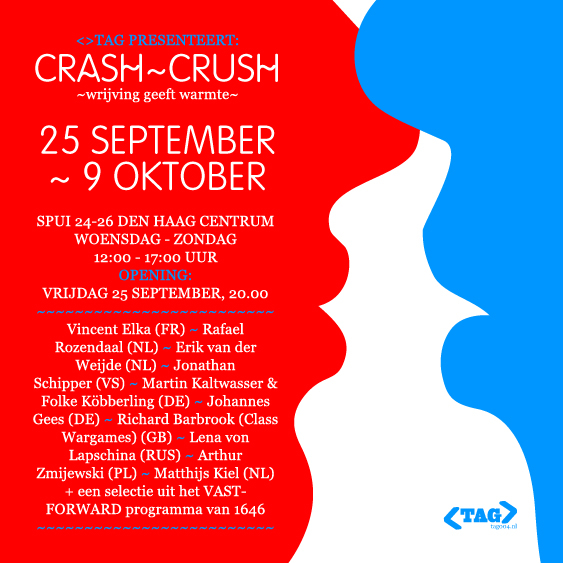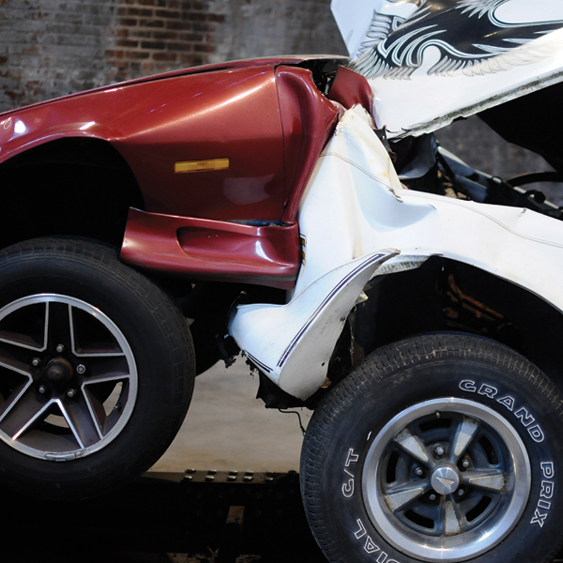Incentives
The incentives in the work of Vincent Elka (FR, 1972) provoke the viewer to act. His latest installation Sho(u)t responds to the different emotional layers of the human voice, creating an interaction between man and machine. All emotional incentives ‘heard’ by the installation are immediately transformed into image and sound. According to Elka this verbal accumulation results in a language everyone feels, speaks and understands.
The incentives of Johannes Gees (DE, 1960) on the other hand create confusion. Gees focuses in his work on conflicting cultures. By switching calls for prayer, from the Christian and Islamic traditions, he creates a confusing and funny moment in public space. The Islamicisation of society has become an issue of discussion and conflict in- and outside parliaments. Gees, however, is able to keep a fresh and concise approach to this topic in spite of its complexity.
Lena von Lapschina (RUS, 1965) also creates confusion in her work. She turns our ideas about communication and conventions in public space inside out in her short and simple videos (that sometimes only last 17 seconds). In ‘Once around the block’ a man leaves a party in the hart of Vienna. He takes off his clothes, runs around the block, puts his clothes back on and re-enters the party.
Conflict
The work of Jonathan Schipper (VS, 1976) wishes to resolve conflict. It shows the glass chips of a broken bottle of beer being held together by hydraulic arms. The chips create a bottle, the bottle explodes, the chips then fall back to their original shape and create a bottle again.
Arthur Zmijewski (PL, 1966) believes art itself can be a remedy for conflict. Zmijewski wants art to give up her autonomous position. Art should take responsibility and create a dialogue with the current social and political reality. The video ‘Them’ shows a social experiment in which Zmijewski brings together conflicting groups of Polish society, such as socialists, nationalists and Catholics.
A different way of resolving conflict can be found in the Class Wargames of Richard Barbrook (GB, jaartal). The Class Wargames are inspired by ‘The Game of War’ of Guy Debord, who is the celebrated leader of the Situationist International and the writer of ‘The Society of the Spectacle’. After the revolution of 1968 Debord worked for twenty years on his most important work: The Game of War. Debord regards this as not just a game, but as a guide on how to survive consumer society. The player learns how to fight as a revolutionary activist against the rulers of ‘The Spectacular Society’. Class Wargames will play the game in front of a live audience on October the 9th and 10th.
The outcome
The outcome of a conflict can contain a certain beauty, in spite of its sometimes violent history. Matthijs Kiel (NL, 1978) from the Hague shows a video of the destruction of a car. After the car has been physically confronted by a group of people, the wreck transforms into an animal.
Folke Köbberling & Martin Kaltwasser (DE, 1969/1965) choose another way of showing the outcome of conflict. Their sculpture represents a wrecked car made of wood. It is their cynical answer to the product-oriented society of today. It also refers to the beauty of a crash, that they emphasize by skilfully recreating it from wood.
The work of Erik van der Weijde (NL, 1977) at first does not seem to refer to conflict. On four photos we see a spectacular view of mountain scenery. It is after reading the titles that you realize how this uncomplicated beauty can become sour, when you learn it was Hitlers view on the ‘Obersalzberg’ in South Bavaria, from where his house was built.
Rafael Rozendaal (NL/DE, 1980) shows complete reconciliation of conflict. Roozendaal mainly makes simple websites, in www.muchbetterthanthis.com for example we see two people kissing. Every time they touch, they change colour. The viewer is unable to influence this process from the computer. Their steady and modest reconciliation does not need anymore incentives from the outside world.
The artist-run space 1646 presents a selection of videos from their VAST-FORWARD video program. The selection mainly focuses on local artists and takes shape in an interactive installation. The viewer is invited to play the part of the curator and to create their own line-up. This brings forth several conflicts surrounding the position of the curator: Does the curator only form line-ups? And how does the curator influence work by placing it in certain contexts?
Hicham Khalidi & John de Weerd
Participating Artists
Vincent Elka (FR) – Rafael Rozendaal (NL) – Erik van der Weijde (NL) – Jonathan Schipper (VS) – Martin Kaltwasser & Folke Köbberling (DE) – Johannes Gees (DE) – Richard Barbrook (Class Wargames) (GB) – Lena von Lapschina (RUS) – Arthur Zmijewski (PL) – Matthijs Kiel (NL) + a selection of videos from the VAST-FORWARD program of 1646

